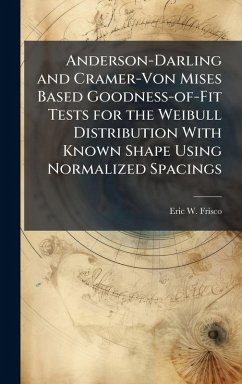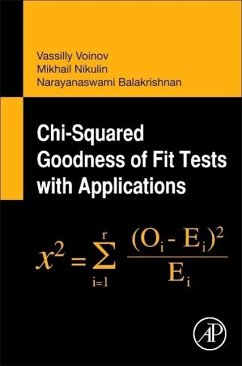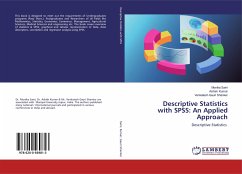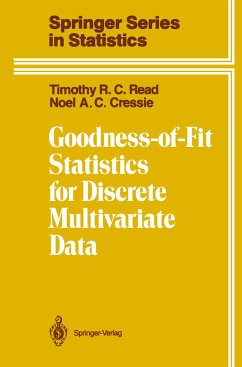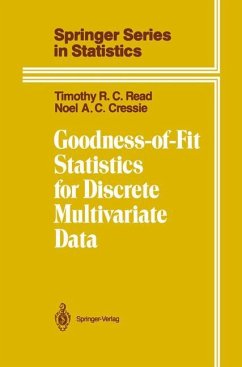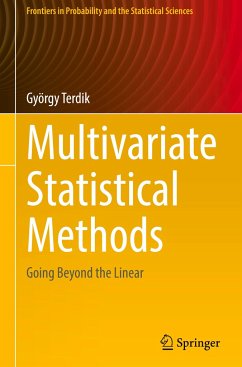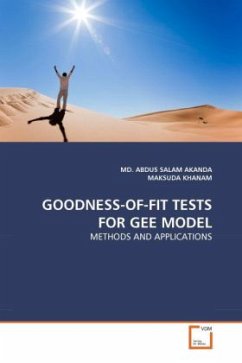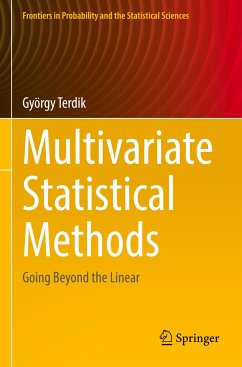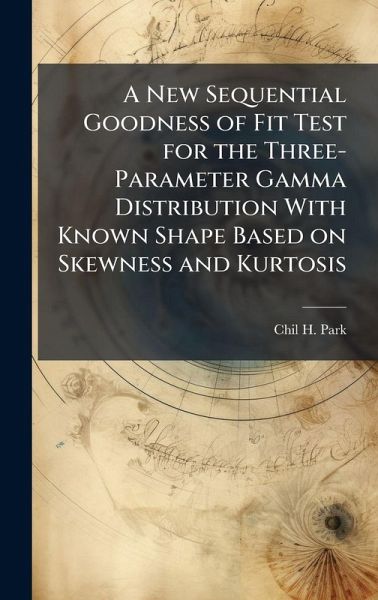
A New Sequential Goodness of Fit Test for the Three-Parameter Gamma Distribution With Known Shape Based on Skewness and Kurtosis
Versandkostenfrei!
Versandfertig in über 4 Wochen
34,99 €
inkl. MwSt.
Weitere Ausgaben:

PAYBACK Punkte
17 °P sammeln!
This research presents a sequential goodness of fit test for the three-parameter gamma distribution with a known shape. The test is accomplished by employing the two new tests, sample skewness and sample kurtosis, sequentially as test statistics. Unlike the typical goodness of fits using parameter estimation methods such as MLE (maximum likelihood estimation) and MD (minimum distance estimation). This sequential goodness of fit tests using two test statistics above do not involve a substantial degree of computational complexity. Critical values are obtained using large Monte Carlo simulations,...
This research presents a sequential goodness of fit test for the three-parameter gamma distribution with a known shape. The test is accomplished by employing the two new tests, sample skewness and sample kurtosis, sequentially as test statistics. Unlike the typical goodness of fits using parameter estimation methods such as MLE (maximum likelihood estimation) and MD (minimum distance estimation). This sequential goodness of fit tests using two test statistics above do not involve a substantial degree of computational complexity. Critical values are obtained using large Monte Carlo simulations, which use 'percentile' function, for shapes of 0.5(0.5)4.0 and sample sizes of 5(5)50. Attained significance levels for all combinations of the two tests between = 0:01(0:01)0:20 are also approximated with Monte Carlo simulations. Extensive power studies are then conducted against two sets of alternatives. One is against common alternative distributions and the other is comparative study whose competitor are popular EDF test statistics such as the Anderson-Darling, Cramer-von Mises, and Komogrov-Smirove tests. This work has been selected by scholars as being culturally important, and is part of the knowledge base of civilization as we know it. This work was reproduced from the original artifact, and remains as true to the original work as possible. Therefore, you will see the original copyright references, library stamps (as most of these works have been housed in our most important libraries around the world), and other notations in the work. This work is in the public domain in the United States of America, and possibly other nations. Within the United States, you may freely copy and distribute this work, as no entity (individual or corporate) has a copyright on the body of the work. As a reproduction of a historical artifact, this work may contain missing or blurred pages, poor pictures, errant marks, etc. Scholars believe, and we concur, that this work is important enough to be preserved, reproduced, and made generally available to the public. We appreciate your support of the preservation process, and thank you for being an important part of keeping this knowledge alive and relevant.



